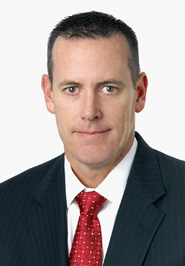Look out, Credit Suisse. Barclays is closing in on U.S. dark pool supremacy.
Simply put, LX is now the second largest dark pool in the United States, behind only Credit Suisse’s long-time leader, Crossfinder.
Amid a multi-year retooling effort and upgrading of its technologies, Barclays LX dark pool has gained market share that’s propelled it to second place among its peers, according to reports from both Tabb Group and Rosenblatt Securities.

In January, 91 million shares, or 10 percent of all volume on dark pools, were traded each day on LX, according to the Tabb Group Liquidity Matrix, a monthly liquidity and pricing report for U.S. equities exchanges, electronic communications networks, dark liquidity pools and crossing networks. This was second only to Credit Suisse’s Crossfinder, which traded 121 million shares or 18 percent of dark volume.
Rosenblatt Securities, another tracker of U.S. dark pools, reported in its February analysis that LX grabbed 1.41 percent of total consolidated volume of 6.4 billion shares traded daily on all lit or dark venues. That, too, trailed only Crossfinder, which snared 1.88 percent. After Crossfinder and LX came Goldman Sachs’ Sigma X, UBS’s ATS and Deutsche Bank’s Super X pools.
“We laid out a plan two years ago to overhaul our offering end to end, gain market share and provide clients with the best electronic trading tools in the market,” said Bill White, head of equities electronic trading at Barclays. “The number two ranking is a reflection of the success of that plan and the strength of our entire equities franchise.”
In 2009, its LX dark pool was languishing in 10th place among its peers. By 2010, it jumped three spots to number 7 and then in 2011, it climbed yet again to fifth place. By January 2012, LX had once again moved upward but now into the top 5 dark pools, joining the ranks of Knight Capital Group’s Knight Link and Deutsche Bank’s Super X. But the upward trajectory continued throughout the year as LX climbed over Knight and Deutsche Bank by December.
With momentum on its side, LX vaulted over Goldman Sachs Sigma X this year to rest at number two firmly behind Crossfinder. And getting into and unseating Goldman in that uppermost of echelons is something that hasn’t been done since 2007, Cheyenne Morgan, analyst at Tabb Group noted. She pointed to the firm’s revamping of its electronic products, such as algorithms and smart order router, as well as its active promotion of technology as the keys to success.
“Barclays LX saw a 10 percent increase in volume in January versus December, which is a good way to start the year,” Morgan said. “Passing Sigma X is extraordinary,” Morgan said. “Barclays took a step back and revamped their products and strategies. They knew they had to hone in on their electronic strengths and get the word out.”
And that Barclays did, she added. She credits both Bill Bell and Bill White with getting out to clients and spreading the word, something the firm had not made a top priority in years past, especially compared to other firm’s marketing efforts. As a result, LX has grown and continues to capture volume.
“That’s a good way to start the year and shows Barclays is serious about becoming a contender to the top bulge bracket brokers,” Morgan said.
Barclays’ Bill Bell and Bill White told Traders Magazine previously it was employing a three-pronged strategy to achieve its goal of moving up from the middle of the pack and into the top echelon of broker-dealers. Bell, head of equities electronic and program distribution, and White, head of electronic trading, said at the time their strategy was to deploy its smart-order router globally, grow its dark pool Barclays LX and simplify its algo offerings.
Barclays told Traders that it completed an overhaul of the firm’s electronic trading products to increase efficiency between the firm’s algos, its Dynamic Router and the LX dark pool. And now, Bell said, the results are paying dividends as the desk has seen both its high- and low-touch volume increase, as has the amount of trading flowing through LX. Bell pointed to better order-routing practices and increased awareness of the firm’s product offerings via client meetings as keys to its success.

“All executions, whether they are high-touch or low-touch, go through LX,” Bell said. “We look at everything together now in this new trading paradigm.”
Bell added the firm’s strategy for juicing volumes also included hitting the pavement and visiting not just the institutional investors, but also its broker-dealer business and meeting with smaller and regional firms who don’t have an electronic trading offering. The firm declined to specify how many new clients it has picked up.
Also within the last year, the broker now watches just who participates in the LX pool via its Liquidity Profiling surveillance. This allows the firm to monitor trading behavior – including toxicity – of those in the pool and remove traders who do not benefit the firm’s clients. This, too, has helped promote trade execution in LX, he added, thus increasing volume.
Getting within arm’s reach of the industry’s largest dark pool, Credit Suisse’s Crossfinder, hasn’t been easy. Barclays, however, has managed to gain market share each of the last four years with LX, against a backdrop of falling equity trading volumes and commissions.
While LX is now in the number two spot in terms of volume, its average trade size is only 194 shares. This compares to Citi’s Match pool, which leads the bulge firms with an average trade size of 231. In comparison, Crossfinder, the number one volume venue, trades 178 shares on average.
All told, average volume of trading in the dark pools tracked by Rosenblatt reached 921 million shares a day, or 14.33 percent of consolidated volume of 6.43 billion shares on all unlit and public venues. Rosenblatt does not track volume in Merrill Lynch’s Instinct X dark pool.




